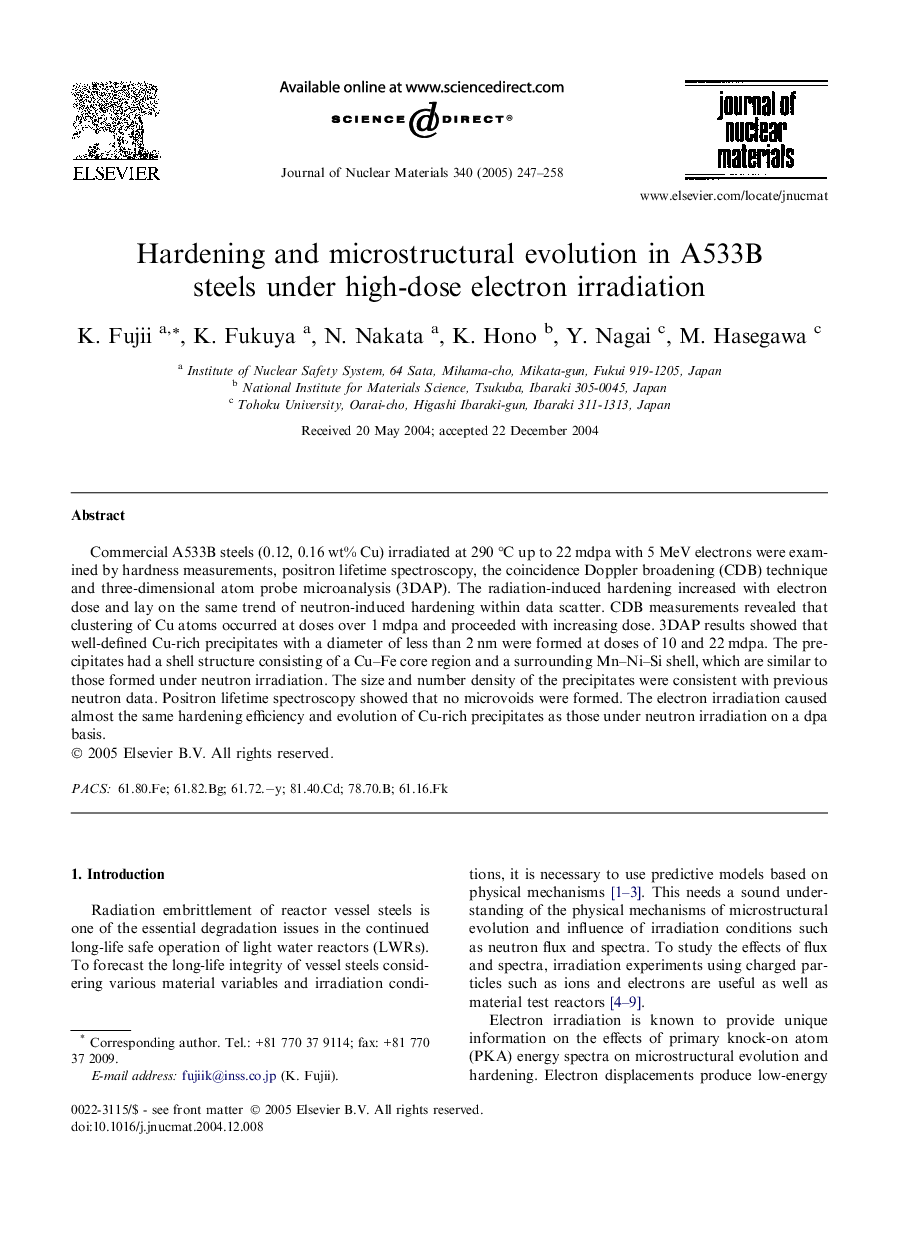| Article ID | Journal | Published Year | Pages | File Type |
|---|---|---|---|---|
| 9793792 | Journal of Nuclear Materials | 2005 | 12 Pages |
Abstract
Commercial A533B steels (0.12, 0.16 wt% Cu) irradiated at 290 °C up to 22 mdpa with 5 MeV electrons were examined by hardness measurements, positron lifetime spectroscopy, the coincidence Doppler broadening (CDB) technique and three-dimensional atom probe microanalysis (3DAP). The radiation-induced hardening increased with electron dose and lay on the same trend of neutron-induced hardening within data scatter. CDB measurements revealed that clustering of Cu atoms occurred at doses over 1 mdpa and proceeded with increasing dose. 3DAP results showed that well-defined Cu-rich precipitates with a diameter of less than 2 nm were formed at doses of 10 and 22 mdpa. The precipitates had a shell structure consisting of a Cu-Fe core region and a surrounding Mn-Ni-Si shell, which are similar to those formed under neutron irradiation. The size and number density of the precipitates were consistent with previous neutron data. Positron lifetime spectroscopy showed that no microvoids were formed. The electron irradiation caused almost the same hardening efficiency and evolution of Cu-rich precipitates as those under neutron irradiation on a dpa basis.
Related Topics
Physical Sciences and Engineering
Energy
Nuclear Energy and Engineering
Authors
K. Fujii, K. Fukuya, N. Nakata, K. Hono, Y. Nagai, M. Hasegawa,
